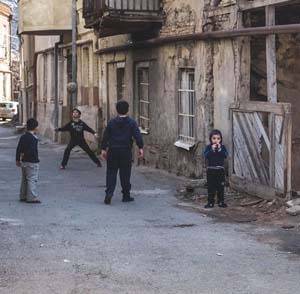
This article is a preview from the Winter 2015 edition of New Humanist. You can find out more and subscribe here.
Beatlebone (Doubleday) by Kevin Barry
This has been a big year for literary resurrections of famous men. The Booker Prize went to Marlon James’s A Brief History of Seven Killings, an epic that centres on the 1976 attempt to assassinate Bob Marley, while the shortlist for the Goldsmiths’ Prize, which recognises experimental fiction, includes Max Porter’s Ted Hughes-conjuring novella Grief Is the Thing with Feathers, and Beatlebone, which summons John Lennon circa 1978.
Of the three, Beatlebone is the most fearless in its advance on an icon. James and Porter keep their daunting subjects at something of a distance, a vortex around which events circle (James), or safely refracted through artfulness (Porter). Kevin Barry, though, storms headlong into the psyche of Lennon. It’s a curious place: Lennon at this point in his history is in retirement, reconciled with Yoko Ono and a full-time father to their son Sean. He is famous, but no longer doing the thing he’s famous for – he simply is a celebrity, on the run from his public and from himself.
Beatlebone imagines him in a fugue or pilgrimage, travelling to an island he owns off the west coast of Ireland where he intends to remain until he is “over himself”. Time, specifically its running out, is a preoccupation, but Barry avoids overloading his story with omens. It’s enough that we know Lennon is just a matter of months from meeting the bullet that kills him, and that he’s feeling fragile, mortal and ready to disappear.
If only he could let himself disappear, if only he wouldn’t keep reasserting himself when what he wants is to stop existing. One section, rich in the comedy of disaster, has local fixer Cornelius take Lennon out for a few pints under cover as “cousin Kenneth”, which turns into a lock-in with singing, which turns into a thoroughly unmasked Lennon sprawled puking on a van bonnet. “Fucken disaster,” concludes Cornelius. There are many disasters, via nosy hoteliers, catharsis-seeking cultists and rampaging packs of press. Much of it is painful, and much of the pain is funny.
Barry catches a very different Lennon from the usual versions: he’s not the angry young man, not the middle-aged seer, but a joker and a mess. Beatlebone, by picking away the cumbersome bits of the legend, finds something that sounds like a plausible Lennon-voice. Rich in puns and playfulness, and cut through with darkness, it’s reminiscent of Spike Milligan or Flann O’Brien – taking Lennon to Ireland, and finding the Irishness in him.
The novel doesn’t only record Lennon’s travels. In recognition of his novel’s tentative position between fact and fiction, Barry includes a passage about his research trip, roughly two-thirds in. Rather than being a post-modern stunt that yanks you out of the book, this pulls you closer. There are eerie coincidences and satisfying answers that commit you fully to the novel for the last section, suspended between biographical and artistic truth. (And if the suspicion remains that Barry might be fictionalising the liner notes to his fiction, it’s worth tolerating.)
In the curdling remnants of hippy culture and the troubled skull of a man who knows but can’t quite overcome his own vanity and violence, Barry has found something brilliant. A novel about tearing the self down to start again. A novel about where art comes from. A novel that isn’t quite a novel, about failure and death but jumping with life. Beatlebone saves Lennon from sainthood and villainy, and makes him – incredibly – someone worth reading about again.

